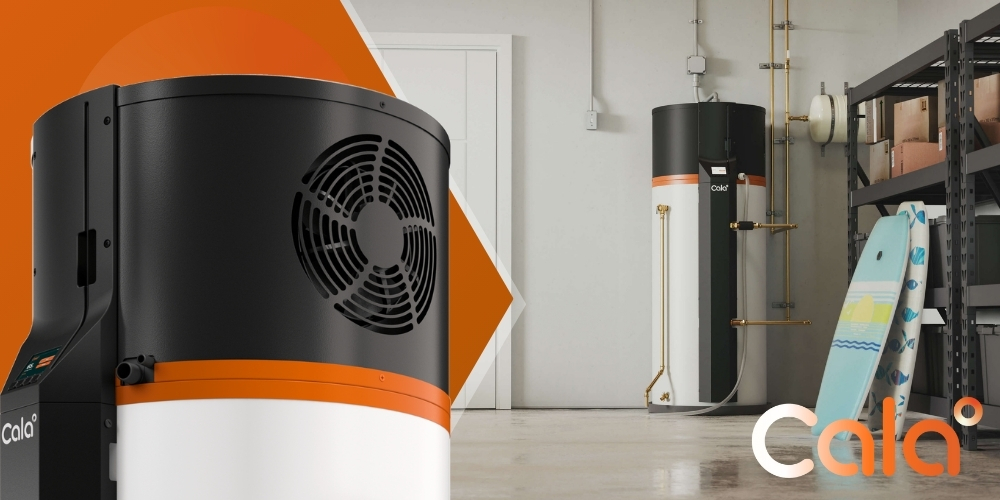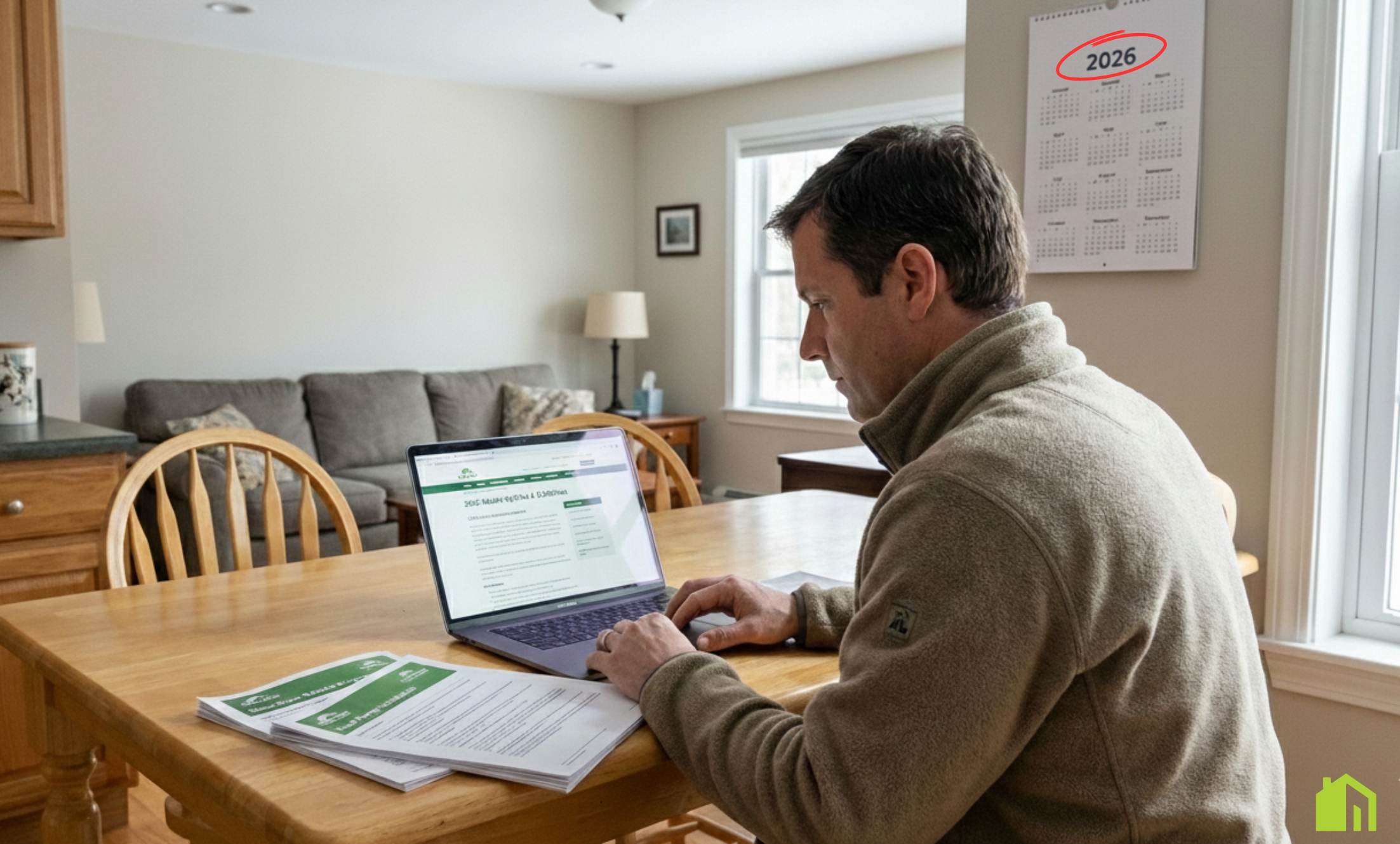How to Install Make-Up Air for a Kitchen Range Hood Safely

Intelligent Heat Pump Water Heaters for Massachusetts Residential Homes — Why SumZero Selects Cala
By SumZero Energy Systems — Massachusetts’ #1 Heat Pump Installation Team
Picking a new water heater once involved a simple decision between gas and standard old electric, praying the hot water wouldn't be gone when there were two showers in a row. That's no longer the case. Now, the ideal solution for the majority of Massachusetts homes is a smart heat pump water heater (HPWH). This isn't the typical hybrid of which you might have heard, but a rather new breed of unit that adapts to your home's schedule, accommodates your energy usage, and maintains comfort consistently while consuming a lot less energy.
When homeowners want to have it exactly right the first time, our team is discerning about what products we choose. We consider the landscape and inspect the details before determining that they might work with Cala, a company that produces a high-technology hot water heater that modern homes need: intelligent, consistent, and efficient hot water — installed properly. This article describes why this alliance matters, how the tech benefits your home, what you should expect from our installation, and the handy information (rebates, credits, fit questions) homeowners inquire about daily.
Why This Alliance Is Important
(and What It Does for You)
There are two parts to a successful hot water solution:
Great technology
A system that makes you comfortable and uses less energy.
Great installation
Design, placement, airflow, electrical, condensate handling, commissioning, and long-term support.
Cala provides a tailor-built, smart HPWH platform. SumZero provides actual-world experience so that it works perfectly in real Massachusetts homes.
Together, we provide three things homeowners report wanting:
Accurate hot water at peak periods without guessing.
Cheaper monthly energy bills without compromise on comfort.
It is a future-proof solution that addresses the trend towards greener, all-electric homes.
Simply put: We get hot water. We know how to properly install heat pump technology. This combination makes a water heater upgrade a smart, long-term decision.
The Homeowner's Dilemma That We Are
If you have had a gas or a typical electric water heater, then you know the problems:
Hot-cold swings on hectic morning routines.
Higher electricity bills than hoped for.
No real insight, no real control.
A replace cycle that is experienced as "buying the same thing again."
Typical hybrid: Heat pump water heaters perform better, yet they still react: They delay until the tank cools off, then warm it up again. Homeowners averred they desire a system which thinks ahead—a unit which is a breeze to operate, handles peak load graciously, and does not make them compromise.
They fill that gap, which is why we work with them.

Why a Smart HPWH is Different
A standard electric water heater makes heat by passing an electric element, a giant toaster coil, through the tank. A heat pump water heater does it another way: it takes heat from the air it lives in and puts it into the water. Because it costs less energy to move heat than create it, heat pump water heaters run on much less power than typical electric ones. And they avoid burning gas, venting, and pollution.
A smart HPWH goes one step further:
It adapts to your home's schedule (morning showers, nighttime laundry) and preheats when demand isn't yet high.
You can use the app to check, plan, or increase hot water whenever you want.
It has a compressor that can change speed to fit what you need (not just "on/off").
It is achievable with a mixing valve holding water at the proper warmth for improved efficiency and then providing a sustained, safe warmth for usage. This is also possible with the availability of additional warm water at peak usage times.
It goes nicely with a contemporary home — primed for solar, time-of-use, and information you can view at a glance.
Result: more stable comfort, less energy use, improved control.
Why a Smart HPWH is Different
From what is visible on-site, there are three things certain for homeowners regarding the points of Cala:
1) Ease That Is Effortless
Consistent hot water at peak use is the ultimate test. Through forecasting demand and using a mixing valve, Cala maintains a steady supply. That results in less "uh oh" when two showers coincidentally happen at once or someone turns on the dishwasher.
2) Controls That You'll Ever Use
App functionality is key when done properly. You can check if there's hot water, turn up the heat for guests, view energy usage history, or simply set it and leave. As installers, we appreciate performance data — it allows us to address little issues before large ones form.
3) Future-Ready from Day One
Massachusetts is going towards clean, electricity-based homes. Cala's strategy combines well: it is scalable for solar power and accounts for time-of-use rates when needed. If you foresee solar energy at some time, or already have it, this water heater won't stop your home from being efficient.
4) A Company That Stands Behind Its Product
Cala backs every unit with a 10-year parts warranty and 3-year labor warranty — a strong sign they stand behind both the technology and the people who install it. At SumZero, we respect that kind of commitment because it mirrors our own approach: taking care of homeowners and supporting our partners with the same level of trust and accountability.
What SumZero Offers As Your Installer
(Why It Matters)
Even the best system won't work so great if installed wrong. Our task is getting your new HPWH working perfectly inside your home, not on a drawing board. This is what our approach is:
Right-size design.
We measure how much water your home needs and discuss the high-flow fixtures, filling bathtubs, and washer usage.
Best installation and ventilation.
HPWHs require air to make the heat move. We consider the room size, doors, vents, and — when necessary — ducting solutions for high performance and low noise.
Clean handling of electricity and condensate.
Safe power, tidy routing, and a trustworthy drainage plan are essential.
Commissioning correctly.
We don't just "turn it on." We verify performance, position the mixing valve, help you with the app, and verify your comfort objectives.
Rebates, credits, and financial assistance.
Mass Save, federal 25C, and the 0% HEAT Loan (if applicable) — we'll help you with that.
We take special care.
Our teams respect your home, protect your floors, and leave the place nicer than they found it.
Aftercare you can count on. Questions years down the road? We're here. The whole concept of a smart system is long-term confidence, not a one-day installation.
Costs, Incentives, and Lifetime Value
Two parts matter here: upfront cost and operating cost.
→ It is a better unit than a standard electric or simple hybrid. Tax credits and rebates make a big difference. A lot of Massachusetts homeowners rely on the 0% HEAT Loan for easier payments.
→ Month after month, the intelligent HPWH's effectiveness is where the value lies. By transferring (not creating) heat and by scheduling heating intelligently, homeowners consistently experience significant decreases in water-heating energy consumption — particularly relative to resistance electric, and many times relative to gas or delivered fuels when full costs are factors.
If you'd like figures specific to your home (household number, showering usage, energy costs), we'll do the math at your consult and provide you with a clear estimate of payback, lifetime cost saving, and the rebates for which you qualify.
Are Smarter Heat Pump Water Heaters Good for Your Home?
It is feasible for many Massachusetts homes. We will cover:
→ Household size and routines. Families with up to about 5 people usually do well with the standard setup; we will give advice for larger families or special situations.
→ Space and ventilation. We check the space, door vents, or ducts if necessary, and ventilation so the system operates properly.
→ Location. Basements are typical, as are utility rooms. As the unit functions, it removes air that feels like a dehumidifier — a typical plus for basements.
→ Electrical. We check panel capacity and proper wiring; no installation day surprises.
→ Future plans. Now or in the future for solar? Time-of-use rates? We'll put the system on so it grows with your home.
[[cta-heatpump]]
Why Is Cala Different from "Traditional Hybrids"?
✪ Control and Convenience:
Cala integrates intelligent tech with a mixing valve to remain comfortable, even when it is busy. Most standard hybrid units have simple modes and react only when the tank becomes chilled.
✪ Care and Trust:
Performance insights help you recognize problems early on and keep you on your feet for surprises. Traditional deployments are mostly "wait and see."
✪ Timing and Efficiency:
Variable driving and improved scheduling assist in energy saving with the maintenance of comfort. Ordinary hybrids operate more often and at undesirable times.
✪ Future-Ready
The design of the Cala accommodates with solar power, intelligent homes, and plans for utilizing electricity. Most older hybrids were not built for that usage.

What to Expect with SumZero
(From the First Call Through the First Shower)
✪ Talk & Pictures
We'll first glance at your objectives and take some fast photos of the current installation: the water heating unit, panel, and surrounding room.
✪ Right-Fit Design
We fit your hot water consumption and available spaces to a design which we endorse.
✪ Chaplain: A Comprehensive
Your quote is going to be transparent, includes information for installation, accessories, and a checklist for incentives. The paperwork assistance takes care of our end.
✪ Professional Installation
Licensed, insured, and detail-orientated. We dispose of the old unit, prepare the site, install and commission a new system, and leave the site tidy.
✪ App Introduction and Instructions
You'll discover how to see hot water supply, schedule increases, and view consumption — without being "technical."
✪ Support and Help
We're your long-term partner. Got a question? You call us — that's what homeowners deserve from the #1 heat pump installation company.
Common Questions We Get
(And Easy Answers)
Smart heat pump water heaters move heat from the surrounding air into the water instead of generating heat directly. This makes them up to three to four times more efficient than standard electric models. Cala’s intelligent system takes it further — it learns your household’s patterns, preheats before busy periods, and gives you app-based control to monitor or boost hot water anytime.
Most hybrid water heaters react when the tank cools. Cala predicts when your home will need hot water and heats proactively, saving more energy while maintaining comfort. It also features a variable-speed compressor, integrated mixing valve, and performance monitoring portal, giving both homeowners and installers a smarter, more reliable experience.
Savings depend on your energy source and usage, but many Massachusetts homeowners cut their water-heating costs by 50–70% when switching to a heat pump system. Cala’s intelligent controls add even greater efficiency. Add Mass Save® rebates, federal 25C tax credits, and potential 0% HEAT Loan financing, and most families see real payback within just a few years.
Yes — most Massachusetts homes are a great fit. Cala’s 65-gallon design comfortably serves households up to five people and can prepare up to 90 gallons ahead of peak use. The system needs adequate space and airflow, similar to a dehumidifier, and our team at SumZero handles every detail — from placement and ducting to electrical and performance checks.
SumZero Energy Systems is Massachusetts’ #1 heat pump installation team, trusted for precision, transparency, and high-quality service. We manage every step — design, installation, rebate paperwork, app setup, and long-term maintenance — so homeowners enjoy smarter comfort and lasting confidence. With SumZero, you’re not just buying equipment; you’re gaining a partner who stands behind it.
Why We Feel Secure Recommending This to Massachusetts Homeowners
We have a simple promise: we only install solutions that we would use in our own homes. Cala’s approach — being smart, having control, and being ready for the future — matches what we have learned from many talks with homeowners in the state. Together with SumZero’s careful installation standards and ongoing support, this water-heating upgrade makes sense right away and will last well with your home. Cleaner heat. Smarter comfort. Fewer bills.
Ready to Take the Next Step?

To learn more about Cala’s technology and vision, visit Cala Systems.
Why Installing Make-Up Air is Crucial for Range Hood Safety in Massachusetts
Upgrading your kitchen with a powerful range hood is a smart move—especially if you love to cook. But in Massachusetts, where building codes are strict and homes tend to be tightly sealed for energy efficiency, you must consider one important factor: make-up air. Without it, your range hood could actually cause more harm than good.
A properly installed make-up air system keeps your indoor air balanced, protects your family from harmful backdrafts, and helps your ventilation function the way it’s supposed to.
Many Massachusetts homeowners don’t realize that a powerful kitchen exhaust fan can pull combustion gases back into their home unless a safe source of replacement air is provided.
Let’s dive into how to install make-up air for a kitchen range hood the safe and smart way.
Understanding the Basics of Make-Up Air Installation
Before starting your project, it’s important to grasp why make up air unit installation matters and how it works in a Massachusetts home. Installing make-up air isn’t just about meeting building code—it’s about ensuring your home's air quality and safety.
What Does Make-Up Air Actually Do?
Make-up air refers to the fresh air brought into your home to replace the air your kitchen hood fan expels. Without it, the pressure inside your home can drop, leading to dangerous consequences.
- Prevents backdraft from furnaces, water heaters, and fireplaces
- Stabilizes home pressure to maintain comfort and air quality
- Supports energy efficiency by keeping heated or cooled air balanced
How Massachusetts Building Codes Affect Installation
Massachusetts building code requires that any exhaust system over 400 CFM must have a make-up air system. This is more common than you think—many popular range hoods exceed this airflow.
- Always verify current ventilation code with your municipality
- Look for CFM ratings when buying or upgrading your hood
- Understand that a code-compliant make-up air system helps resale value
According to the Massachusetts Energy Code, mechanical ventilation systems must include provisions for balanced airflow to meet Indoor Air Quality (IAQ) standards.
Step-by-Step Guide on How to Install Make-Up Air for a Kitchen Range Hood
Once you understand the purpose behind it, learning how to install make up air for range hood becomes far less intimidating. You’ll need to plan carefully, especially to ensure that the incoming air is filtered, tempered, and ducted efficiently.
Step 1: Determine the Range Hood CFM
Begin by checking the specs of your kitchen exhaust system.
- If your range hood exceeds 400 CFM, a make-up air unit is required
- Note whether your existing system includes a damper or exterior vent configuration
Step 2: Choose a Location for Make-Up Air Intake
You’ll need a dedicated pathway for outside air to enter when the range hood is on. Typically, this involves ductwork leading into or near the kitchen.
- Avoid placing intake ducts too close to your garage or driveway
- Elevate exterior intakes to keep debris, snow, and moisture out
- Insulate ducts when routed through unconditioned spaces
Step 3: Install a Motorized Damper or Duct System
This mechanism opens automatically to let in fresh air only when the range hood operates.
- Damper should be wired to activate at the same time as the hood fan
- Install filters or screens to keep out pests and airborne particles
- A damper with insulation will also reduce heat loss in winter
Step 4: Temper the Incoming Air
Massachusetts winters can be brutal, so it’s important your system doesn’t blast freezing air into your kitchen. A tempered system pre-warms the replacement air before it enters your living space.
- Consider integrating an electric heater or ducted heat exchanger
- Some make-up air kits include preconfigured tempering solutions
- If you’re using a heat pump, it may be possible to integrate airflow for added comfort
[[cta-heatpump]]
This is a great opportunity for Massachusetts homeowners thinking about upgrading to modern HVAC systems like ducted heat pumps—which can work alongside your ventilation improvements seamlessly.
Trouble-Free Tips for DIYers and Renovators
Whether you're building a new home in Massachusetts or simply updating your kitchen, installing make up air the right way ensures long-lasting comfort and code compliance. Let’s cover some practical tips to keep your project smooth and safe.
Tip 1: Don’t Guess—Calculate Airflow Accurately
Use online calculators or manual formulas to match the make-up air volume with your exhaust fan’s capacity. Oversizing can waste energy, while undersizing can lead to performance issues.
Tip 2: Keep It Quiet
No one wants to hear a loud whoosh every time the kitchen fan turns on. Choose components that are acoustically rated if the ductwork runs through living areas.
- Use insulated or flexible ducting
- Mount blowers or dampers in basement or attic if possible
- Double-check manufacturer specs for decibel levels
Tip 3: Automate Wherever You Can
Automation improves usability and guarantees your system works when it should.
- Choose a range hood with a built-in switch for make-up air control
- Consider smart timers or humidity sensors for optimal performance
- Some thermostats can coordinate with make-up systems if integrated
Homeowners often overlook how automation not only improves safety, but also boosts energy savings and comfort over time.
Tip 4: Always Inspect After Installation
After you’re finished, verify the system works safely. Turn on your range hood and listen for the damper or blower kicking in.
- Check that intake ducts stay sealed when fan is off
- Feel for unwanted drafts or noise that may signal poor installation
- Track energy use during first few weeks to ensure balance
Tip 5: Take Advantage of Local Resources
Massachusetts offers great energy-saving programs and homeowner support. Consult certified information available through programs like Mass Save®.
- Check for rebates on make-up air systems or ducting upgrades
- Learn how ventilation affects energy audits and insulation performance
Enjoy Safer Cooking and a Better-Performing Kitchen
Getting your kitchen vented correctly may not sound exciting, but it makes a huge difference in safety, comfort, and efficiency—especially during the Massachusetts winter season. The key to success is understanding how to install make up air properly and planning ahead based on the size and pressure of your home.
Whether you're installing a new high-efficiency hood or upgrading an old one, a well-designed make-up air system will support your investment for years to come. With fewer odors lingering in your kitchen and safer indoor air during those long heating months, your home will feel fresher—and healthier—every time you cook.
Ensure your kitchen stays fresh, safe, and up to code with expert make-up air unit installation—especially vital for Massachusetts homes with high-powered range hoods. Learn how to get it right today!
Schedule Make-Up Air InstallYou Might Also Like…
Continue learning with handpicked articles that inform and inspire.
Not Sure Where to Start? We’ll Guide You
Let our experts design the right heating and cooling solution—customized for your comfort, your layout, and your energy goals. No pressure. Just clarity.
Request FREE ESTIMATE









